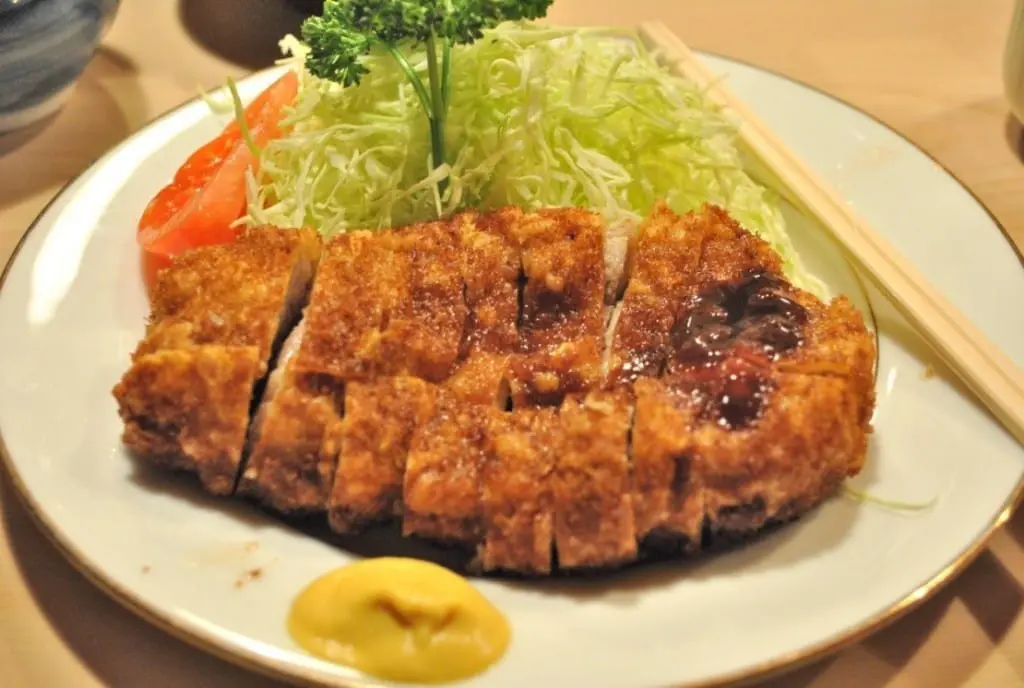An Introduction To Tonkatsu, The Japanese Dish You Just Need To Taste!

The delicious - and almost addictive! - Tonkatsu (deep fried pork cutlet), is becoming more and more popular, not only in Japan, but also among international visitors. Find out more about this staple Japanese food and main ingredient in some of the best l
What is "Tonkatsu"?

Tonkatsu is a deep fried Japanese pork cutlet and is one of the most popular Japanese dishes. The pork loin or pork medallion is dipped into a batter of flour and egg, coated with breadcrumbs, deep-fried and then served in a multitude of ways. The combination of the juicy pork and crunchy texture of the breadcrumbs is very addictive. 'Ton' means pork in Japanese while the 'katsu' originally came from the English 'cutlet' or French 'cotelette'.
Tonkatsu is most commonly served at tonkatsu restaurants, although it can be found in most Japanese restaurants. The most popular restaurants often have quite long queues out front during the lunch hour, thanks to these dishes. To get the most out of your first experience with tonkatsu, you should definitely order the teishoku (set meal), which comes with shredded cabbage, rice, miso (*1) soup and Japanese pickles.
*1: Miso: fermented bean paste
What is 'Tonkatsu Sauce'?
Tonkatsu is often topped with 'tonkatsu sauce'. A type of Worchester sauce, it is mainly composed of extracts from various vegetables and fruits, combined with salt, vinegar, sugar and spices. The type of sauce that comes with tonkatsu often varies by region and sometimes by shop - for example, Nagoya is well known for its 'miso katsu', which is a tonkatsu coated in a rich miso-based sauce.
Other Seasonings
Although tonkatsu sauce is the most popular seasoning for tonkatsu, there are other options too. Tonkatsu can be eaten without seasoning or simply with salt if you like. If you want it hot, you may want to put some karashi (Japanese mustard) or Western mustard on top. Tonkatsu also goes very well with rice. If you fill your mouth with tonkatsu and rice, you can enjoy a wonderful collaboration of flavors.
You can’t ignore the shredded cabbage that comes with tonkatsu though. The fresh cabbage makes the sometimes oily katsu easier to eat and is also necessary to make this set a more balanced meal. Sometimes the cabbage is topped with salad dressing but some prefer to sop up their sauce with the cabbage instead.
As we mentioned above, miso katsu is very popular in Nagoya and is served with its own sauce that also goes great with cabbage. Haccho miso (a reddish soybean paste), this sauce can also be found on other pork-based dishes and is highly recommended.
Other Tonkatsu Dishes
Tonkatsu itself is already a dish, but katsu curry and katsu-don are two other popular tonkatsu dishes. Katsu curry has white rice and Japanese style curry topped with a large piece of katsu - or sometimes the curry is poured over the katsu instead. Either way, this dish is delicious and very popular with young people.
Katsu-don is a a popular type of rice bowl. Here the tonkatsu is cooked in a sweet soy sauce, onions and stock, to which then a lightly beaten egg is added. This is then poured over the rice and garnished. The flavors of the stock and lightness of the egg blend really well with the fluffy white rice underneath. Katsu-don is another very popular lunchtime dish in Japan.
94年生まれ。神戸出身、東京在住。アメリカからの帰国子女。旅、アート、食が大好きな大学生。



































![[2026] Top 5 Strawberry Picking Spots in Tokushima, Naruto| Farms and Access Guide for January to May](https://resources.matcha-jp.com/resize/720x2000/2025/03/06-227165.webp)

